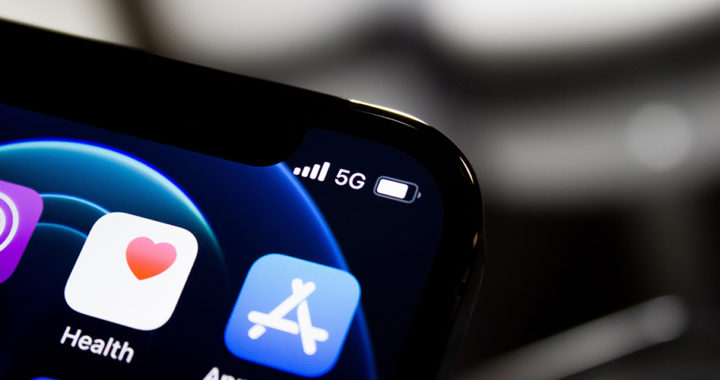There are two types of network technologies used in fifth-generation or 5G networks. These are the Sub-6 GHz 5G technology and the millimeter-wave or mmWave 5G technology. The C-Band 5G falls under the Sub-6 5G standard. Nevertheless, between the two, the latter has specific advantages that collectively translate to network performance superiority. It still has several notable drawbacks and limitations. This article lists and explains the pros and cons or advantages and disadvantages of mmWave 5G.
Pros and Applications: The Advantages of mmWave 5G Technology
mmWave 5G technology represents the utilization of the millimeter-wave spectrum for wireless digital communication. The spectrum includes frequencies between 24 GHz and 300 GHz range. Hence, within the electromagnetic spectrum, these include the upper limits of radio waves and other electromagnetic radiation within the microwaves.
Higher frequency corresponds to shorter wavelengths. This translates to faster wireless data transmission because signal-bearing electromagnetic waves move faster in higher frequencies and shorter wavelengths. These characteristics of millimeter-wave define the advantages of mmWave 5G technology, as well as its applications.
1. Faster than Sub-6 GHz 5G and Previous Network Technologies
Fifth-generation networks that use frequencies within the millimeter-wave spectrum are considerably far superior to Sub-6 GHz 5G and other cellular network technologies used in Long-Term Evolution or LTE, fourth-generation or 4G, and 3G networks.
The technology has a theoretical data transmission speed of between 200 Mbps to 1 Gbps. 5G which uses the Sub-6 GHz spectrum has a theoretical speed of between 50 Mbps to 200 Mbps while the real-world performance of LTE Advance averages around 50 Mbps.
Network latency in mmWave networks is fewer than 10 milliseconds while having a bandwidth of around 1 Gbps. Sub-6 GHz networks have somewhat closer but smaller values. The network latency of LTE and LTE Advanced networks is around 20 to 30 milliseconds.
Take note that network latency is the time it takes for data to be transferred from one point to another. The bandwidth of a particular wireless network pertains to the maximum amount of data that can be transferred wirelessly over a network in a given time.
2. Alternative and Comparable to Fiber-Based Communications
The aforesaid advantages of mmWave 5G translate further to specific applications that are similar to wired broadband communications based on fiber optics. Networks based on this technology can support data-intensive use-case scenarios.
Examples include streaming high-definition videos and other multimedia content, better video conferencing experience using applications such as Zoom, Google Meet, and Microsoft Teams, and high-performance gaming and on-demand or cloud gaming.
The technology will also power emerging and future wireless digital applications and technologies to include massive Internet of Things, smart and automated automotive vehicles, smart cities, and advanced communication devices, among others.
It is also important to note that several internet service providers have provided access to the internet to residential customers based on 5G network infrastructures. This makes the fifth-generation cellular network standard the closest contender to fiber broadband internet.
Cons and Limitations: The Disadvantages of mmWave 5G Technology
Utilizing electromagnetic radiation with higher frequencies to improve network performance has several disadvantages and limitations. These come from the characteristics or properties of the same higher frequencies themselves. Take note that one of the notable disadvantages of mmWave 5G is limitations in network coverage and signal range.
Remember that higher frequencies correspond to shorter waves. The signals in millimeter-wave networks cannot travel farther than the signals deployed in Sub-6 GHz 5G and LTE or 4G networks. These signals are also limited further by physical obstructions. These drawbacks define the limitations and disadvantages of mmWave 5G technology.
1. More Expensive to Deploy than Sub-6 GHz 5G Networks
There is a higher cost associated with designing and implementing mmWave 5G networks. To be specific, in order to address the network coverage and signal range limitations, network carriers must place multiple smaller cells or base stations in strategic locations.
Sub-6 GHz 5G networks are more practical to deploy because they do not require the same number of cells. These networks can be implemented using the existing infrastructure of LTE and 4G networks; albeit with some hardware upgrades and modifications.
2. Rural and Urban Applications and Issues Regarding Aesthetics
The difference between Sub-6 GHz 5G and mmWave 5G technologies also means that the former is more suitable in rural areas or less dense locales with dispersed structures and scattered populations. The latter is more appropriate in high-density urban areas.
Several critics and observers have also noted that millimeter-wave 5G networks tend to ruin the aesthetics of a natural environment or the beauty of human-made structures. Remember that these networks require hundreds to thousands of cells within a limited area.
3. Device Compatibility and Other Device-Related Issues
Not all 5G-equipped consumer electronic devices are the same. Some entry-level to mid-range smartphones have hardware compatible with Sub-6 GHz 5G networks. They are useless in locations with 5G networks built on millimeter-wave technology.
Some devices support both 5G technologies. However, a device equipped with a mmWave modem requires a substantial battery capacity. The technology is power-intensive. Users will readily notice significant power drain while connected to mmWave 5G networks.
FURTHER READINGS AND REFERENCES
- 2021. “Electromagnetic Radiation: Characteristics and Properties.” Konsyse. Available online
- Kumar, A. and Gupta, M. 2018. “A Review on Activities of Fifth Generation Mobile Communication System.” Alexandria Engineering Journal. 57(2): 1125-1135. DOI: 1016/j.aej.2017.01.043
- Parkvall, S., Dahlman, E., Furuskar, A., and Frenne, M. 2017. NR: “The New 5G Radio Access Technology.” IEEE Communications Standards Magazine. 1(4): 24-30. DOI: 1109/mcomstd.2017.1700042
- Zada, M., Shah, I. A., & Yoo, H. (2021). “Integration of Sub-6-GHz and mm-Wave Bands With a Large Frequency Ratio for Future 5G MIMO Applications.” IEEE Access. 9: 11241-11251. DOI: 1109/access.2021.3051066
